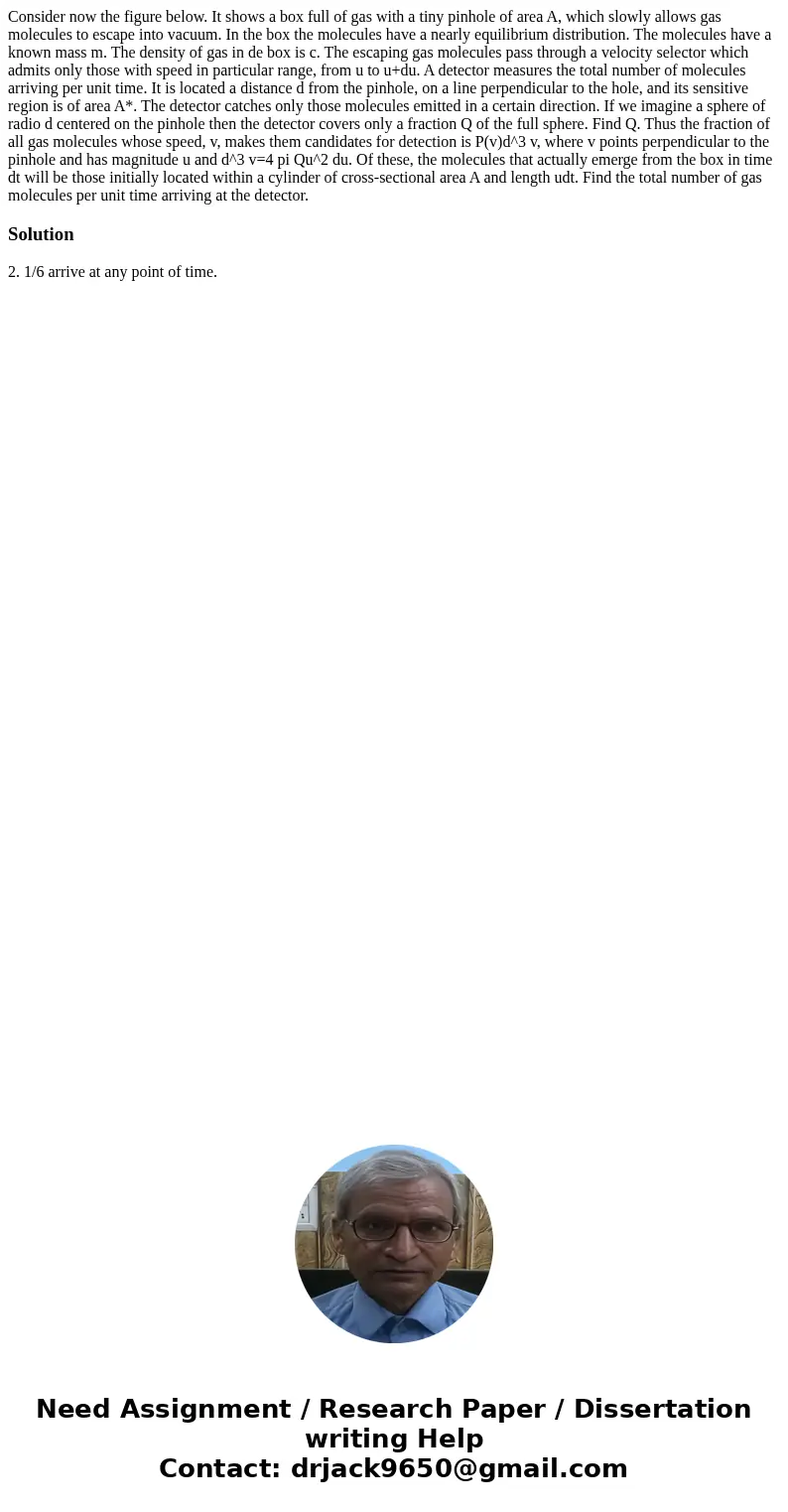Consider now the figure below It shows a box full of gas wit
Consider now the figure below. It shows a box full of gas with a tiny pinhole of area A, which slowly allows gas molecules to escape into vacuum. In the box the molecules have a nearly equilibrium distribution. The molecules have a known mass m. The density of gas in de box is c. The escaping gas molecules pass through a velocity selector which admits only those with speed in particular range, from u to u+du. A detector measures the total number of molecules arriving per unit time. It is located a distance d from the pinhole, on a line perpendicular to the hole, and its sensitive region is of area A*. The detector catches only those molecules emitted in a certain direction. If we imagine a sphere of radio d centered on the pinhole then the detector covers only a fraction Q of the full sphere. Find Q. Thus the fraction of all gas molecules whose speed, v, makes them candidates for detection is P(v)d^3 v, where v points perpendicular to the pinhole and has magnitude u and d^3 v=4 pi Qu^2 du. Of these, the molecules that actually emerge from the box in time dt will be those initially located within a cylinder of cross-sectional area A and length udt. Find the total number of gas molecules per unit time arriving at the detector. 
Solution
2. 1/6 arrive at any point of time.

 Homework Sourse
Homework Sourse